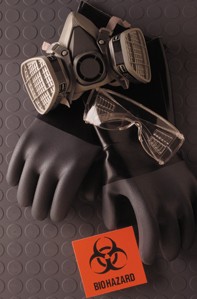Bioterrorism and the Olympics
Bioterrorism would have been the last thing on anyone’s minds as they watched swimmer Kieren Perkins win gold at the 1996 Atlanta Olympics. Yet, sitting in fridges at the Dobbins Air Reserve Base, just north of Atlanta, was a stockpile of antimicrobial drugs ready to be distributed if bioterrorists targeted the games with a clandestine release of one of nine pathogenic micro-organisms. In an emergency, this stash of tablets, capsules and vials would have been flown to health centres by helicopter or sent by road. There was enough medicine to treat an estimated 10,000 people with diseases including anthrax, plague and salmonellosis.
As well as stockpiling drugs including ceftriaxone, ciprofloxacine, doxycycline, penicillin G and streptomycin, the Atlantan authorities had set into motion a train of antibioterrorism measures that touched all aspects of Olympic planning.

